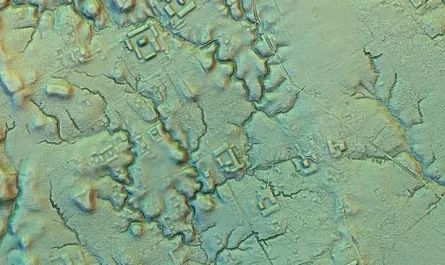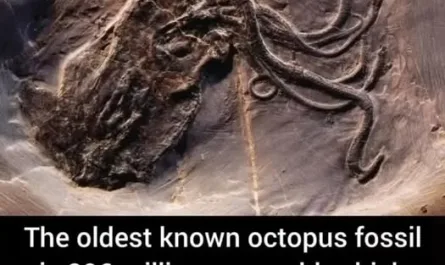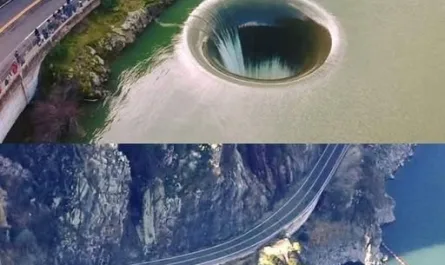About 22,000 to 23,000 years ago, during the Last Glacial Maximum, a young woman, likely carrying a toddler, embarked on two perilous journeys across the muddy shores of Lake Otero, now part of White Sands National Park in New Mexico. Her trail, stretching 1.5 kilometers and preserved in over 400 fossilized footprints, stands as the oldest evidence of human presence in the Americas, rewriting the timeline of human migration to the continent.
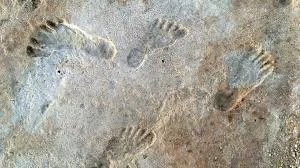
A Trek Through an Ice Age World
Lake Otero, a vast Ice Age lake in the Tularosa Basin, was a vibrant ecosystem teeming with megafauna—mammoths, ground sloths, camels, dire wolves, and American lions. The young woman’s journey unfolded in this dynamic landscape, where muddy lakebeds captured her steps with remarkable clarity. The trackway, discovered in 2018 and detailed in a 2021 Science study, reveals a purposeful, rapid pace, with an average stride length suggesting urgency or determination. On at least one of her trips, she likely carried a child, estimated to be about three years old, based on intermittent smaller footprints and slight variations in her stride.
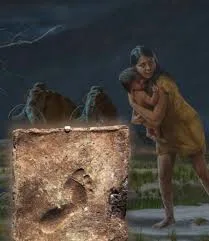
The trail shows two distinct journeys: an outbound trip southward and a return northward hours later, as indicated by changes in the mud’s texture and the angle of sloth and mammoth tracks crossing hers. The presence of megafauna prints suggests she navigated a landscape filled with both opportunity and danger, her path intersecting with animals that could have posed a lethal threat.
Rewriting Human History
Radiocarbon dating of Ruppia cirrhosa seeds in the sediment layers bracketing the footprints places them between 21,130 and 22,860 years ago, pushing back the timeline of human arrival in the Americas by thousands of years. Previously, the Clovis culture, dated to around 13,000 years ago, was considered the earliest evidence of human presence. The White Sands footprints challenge this, suggesting humans arrived during or before the Last Glacial Maximum, possibly via a coastal route or an earlier inland migration.
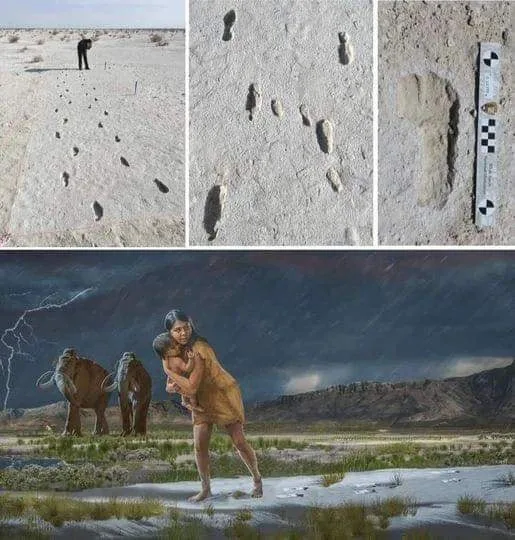
The footprints’ preservation is extraordinary. The moist, clay-rich mud of Lake Otero’s shore, baked by the sun and buried under gypsum sands, created perfect conditions for fossilization. Over 400 prints, including those of adults and children, reveal details about gait, weight distribution, and even moments of slipping, painting a vivid picture of daily life.
A Young Woman’s Story
Analysis suggests the individual was likely a young woman, based on footprint size (about 23 cm long) and stride patterns. Her speed—averaging 1.7 meters per second—indicates a brisk walk, possibly driven by the need to reach a destination or evade predators. The toddler’s prints, appearing sporadically, suggest she carried the child for parts of the journey, perhaps setting them down to rest. The return trip, hours later, shows no child prints, hinting she may have left the toddler at a safe location.

This journey was no small feat. Carrying a child across 1.5 kilometers of treacherous terrain, surrounded by megafauna, required physical endurance and courage. The footprints capture fleeting moments—a slip here, a pause there—humanizing an individual who lived in a vastly different world.
A Legacy in the Sand
The White Sands trackway is more than a scientific breakthrough; it’s a window into the resilience of early humans. This young woman’s steps, preserved for millennia, challenge long-held assumptions about when and how humans populated the Americas. They also highlight the intimate bond between parent and child, echoing across time in a landscape now stark and serene. As researchers continue to study the site, these footprints at White Sands National Park remain a testament to humanity’s enduring spirit, etched into the earth 23,000 years ago.

